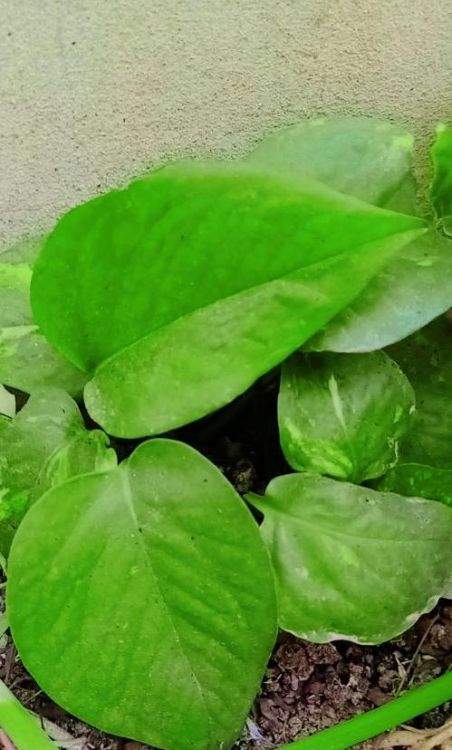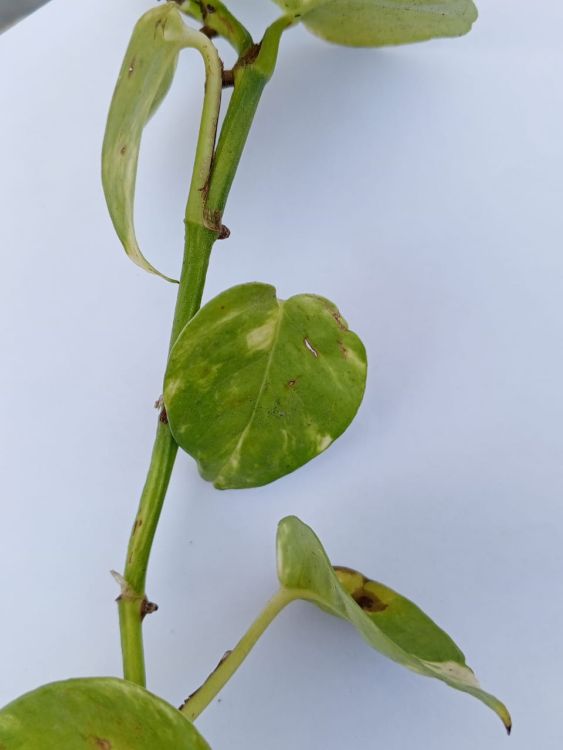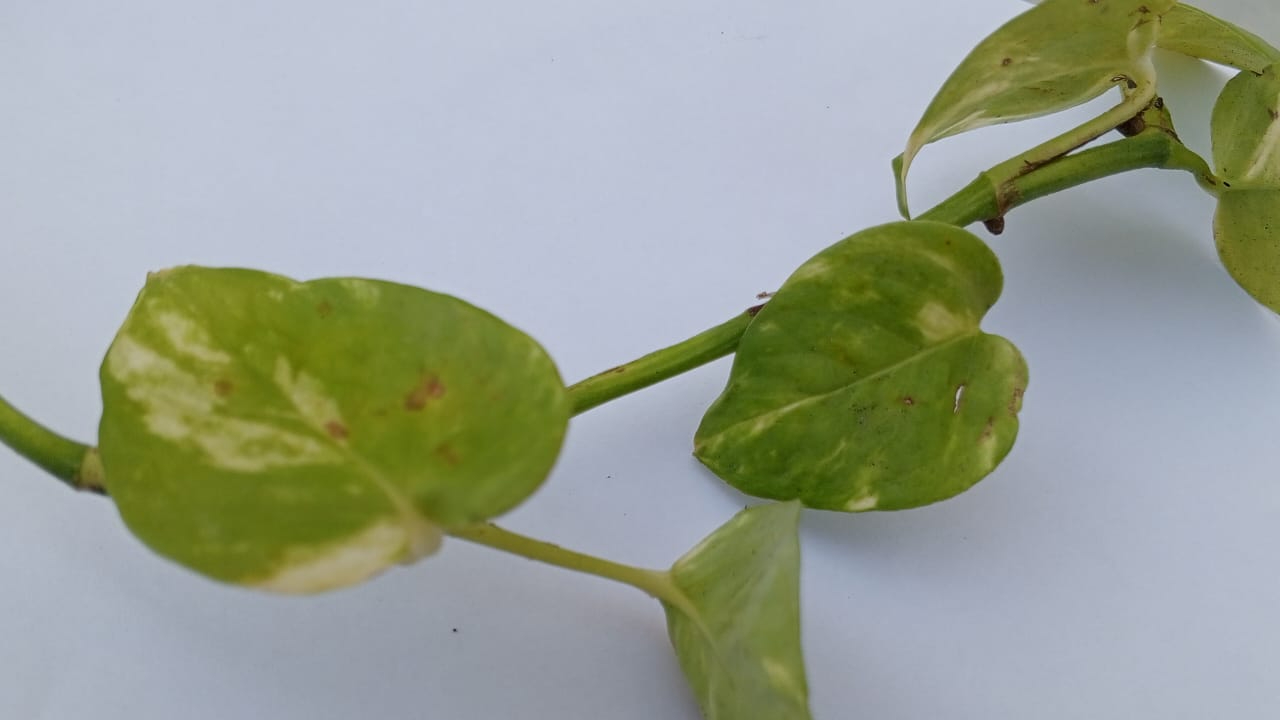Last updated on March 8th, 2024 at 05:26 am
Pothos, a beloved indoor plant renowned for its cascading vines and alluring foliage, may sometimes present a perplexing situation to plant enthusiasts: the emergence of only a solitary vine. This occurrence can pose a mystery, yet it is influenced by various factors including the plant’s maturity, genetic makeup, and the conditions of its environment.
In this guide, we’ll delve into the mystery surrounding ‘Why Does My Pothos Have Only One Vine?’ and explore why certain Pothos plants exhibit this phenomenon. Additionally, we’ll provide practical tips for encouraging the emergence of more vines and healthy growth.
Contents
- 1 Understanding Why Does My Pothos Have Only One Vine?
- 2 Factors Influencing Single Vine Growth in Pothos Plants
- 3 Creating Optimal Conditions for Multiple Vines
- 4 FAQs:
- 4.1 Why does my Pothos plant have only one vine?
- 4.2 Is it normal for pothos plants to have only one vine?
- 4.3 How can I encourage my pothos plant to produce more vines?
- 4.4 Can I propagate my pothos plant to create more vines?
- 4.5 What are the signs of inadequate lighting affecting my pothos plant’s growth?
- 4.6 What pruning techniques should I use to encourage the growth of more vines in my pothos plant?
- 5 Author
Understanding Why Does My Pothos Have Only One Vine?

Exploring the Growth Pattern
Pothos, also called Epipremnum aureum, have gained popularity as indoor greenery due to their adaptability to various conditions. Typically, these plants follow a growth pattern characterized by the development of only one stem during the growth cycle, occasionally branching out. It’s important to understand that this singular-stem growth is natural for most of the pothos plants and doesn’t necessarily indicate poor health.
Encouraging Multiple Vines

If you are in search of the answer to ‘Why Does My Pothos Have Only One Vine?’ and wish to cultivate multiple vines on your pothos, there are strategies for new growth, with pruning being particularly effective. By carefully trimming yellowing or old leaves and sections above nodes, in this way you can promote the emergence of fresh branches, promoting a fuller, more lush appearance in your plant.
Factors Influencing Single Vine Growth in Pothos Plants
As we delve into the complexities of Why Does My Pothos Have Only One Vine? we unravel a tapestry woven from genetic predispositions, environmental conditions, and pruning practices. ‘Why Does My Pothos Have Only One Vine?’ Let’s explore these factors in detail to uncover the mystery behind single-vine growth in pothos plants.
Genetics
Just like humans, plants inherit genetic traits from their parent plants. Some pothos varieties may naturally tend to produce a single dominant vine. This genetic predisposition can result in a plant that appears more vertical than bushy.
Environmental Factors
Environmental conditions play a crucial role in shaping a plant’s growth pattern. Insufficient light, for instance, can hinder lateral growth and encourage vertical growth instead. Pothos plants thrive in bright, indirect light, and inadequate lighting can restrict their lateral branching, leading to the development of a single dominant vine.
Pruning Practices
Pruning is an essential aspect of pothos care to maintain its health and shape. However, improper pruning techniques can inadvertently limit lateral growth. If excessive pruning removes too many growth nodes or stems, the plant may prioritize vertical growth over horizontal expansion, resulting in a single vine.
Rootbound Conditions
Pothos plants are adaptable and can tolerate a variety of soil conditions. However, when confined to a small container for an extended period, they may become rootbound. Restricted root growth can hinder the plant’s ability to uptake nutrients and water, affecting its overall growth pattern. In such cases, the plant may focus its energy on growing vertically rather than producing lateral vines.
Nutrient Imbalance
Have you ever wondered, ‘Why Does My Pothos Have Only One Vine?’ If so, you should know that balanced nutrition is essential for healthy growth in pothos plants. A deficiency or excess of certain nutrients can disrupt normal growth patterns. For example, an imbalance in nitrogen, phosphorus, or potassium levels may favor vertical growth at the expense of lateral branching.
Creating Optimal Conditions for Multiple Vines
To foster the growth of multiple vines in your pothos plant, it’s essential to ensure it is robust to support additional branches. With proper care, you can encourage pothos to grow more vines. These are some strategies to achieve healthy growth:
Fertilization

- Fertilizing your pothos plant provides essential nutrients that support its overall health and growth.
- Opt for a balanced liquid fertilizer specifically formulated for houseplants.
- Follow the manufacturer’s instructions for dilution and application frequency.
- Fertilize your pothos during the growing season, typically spring and summer, when it’s actively growing and benefiting most from the added nutrients.
- Avoid over-fertilizing, as excessive fertilizer can lead to salt buildup in the soil, causing root damage.
Vine Training

- As your pothos grows, guide its main vine along a trellis or stake to encourage upward growth and discourage sprawling.
- Use soft materials like yarn, twine, or plant ties to secure the vine loosely without causing damage.
- Regularly check the vine’s growth and adjust the ties as needed to ensure it remains supported and guided in the desired direction.
- Training the vine helps distribute growth evenly and promotes the development of lateral branches, resulting in a fuller appearance.
Humidity Enhancement
- Pothos plants thrive in environments with moderate to high humidity levels.
- If your home has dry air, especially during the winter months when indoor heating is in use, consider increasing humidity around the pothos plant.
- Place a small indoor humidifier near the plant or use a humidity tray filled with water and pebbles to create a humid microclimate.
- Alternatively, misting the leaves occasionally can also help raise humidity levels around the plant.
- Consistent humidity encourages healthy growth and may stimulate the production of new stems and leaves, leading to multiple vines.
Propagation of Cuttings

- If your attempts to encourage branching on your existing pothos plant are unsuccessful, propagation offers an alternative method to create new plants with multiple vines.
- Take stem cuttings from healthy portions of the plant, ensuring each cutting has at least two nodes (where leaves emerge) and a few leaves.
- Place the cuttings in a jar or vase filled with water, making sure the nodes are submerged.
- Position the container in a bright, indirect light location and change the water every few days to prevent stagnation.
- After roots develop, typically within a few weeks, transplant the cuttings into small pots filled with well-draining potting mix.
- As the new plants grow, provide them with proper care, including adequate light, water, and occasional fertilization, to encourage vigorous growth and the development of multiple vines.
FAQs:
Why does my Pothos plant have only one vine?
Several factors can contribute to a pothos plant having just one dominant vine, including genetics, environmental conditions, pruning practices, rootbound conditions, and nutrient imbalances.
Is it normal for pothos plants to have only one vine?
While it’s not uncommon for pothos plants to exhibit a single dominant vine, it’s essential to address any underlying issues to promote healthier growth and encourage the development of multiple vines.
How can I encourage my pothos plant to produce more vines?
Strategies such as providing adequate light, proper pruning, ensuring nutrient balance, and addressing rootbound conditions can help stimulate the growth of additional vines in your pothos plant.
Can I propagate my pothos plant to create more vines?
Yes, propagating pothos cuttings is an effective way to create new plants with multiple vines. Take stem cuttings, encourage root development, and transplant them into separate pots to promote the growth of additional vines.
What are the signs of inadequate lighting affecting my pothos plant’s growth?
Signs of insufficient light in pothos plants include pale or yellowing leaves, stunted growth, and a lack of lateral branching. Providing brighter, indirect light can help encourage the development of more vines.
What pruning techniques should I use to encourage the growth of more vines in my pothos plant?
Carefully prune your pothos plant to remove old or yellowing leaves, stunted stems, and sections just above growth nodes. This stimulates the emergence of fresh branches, promoting a fuller, more lush appearance with multiple vines.
By implementing these detailed strategies for creating optimal conditions, including addressing the question ‘Why Does My Pothos Have Only One Vine?’, you can maximize the chances of your Pothos plant producing multiple vines, resulting in a lush and visually appealing indoor display.


1 thought on “Why Does My Pothos Have Only One Vine?: 7 Important Factors and Solutions”